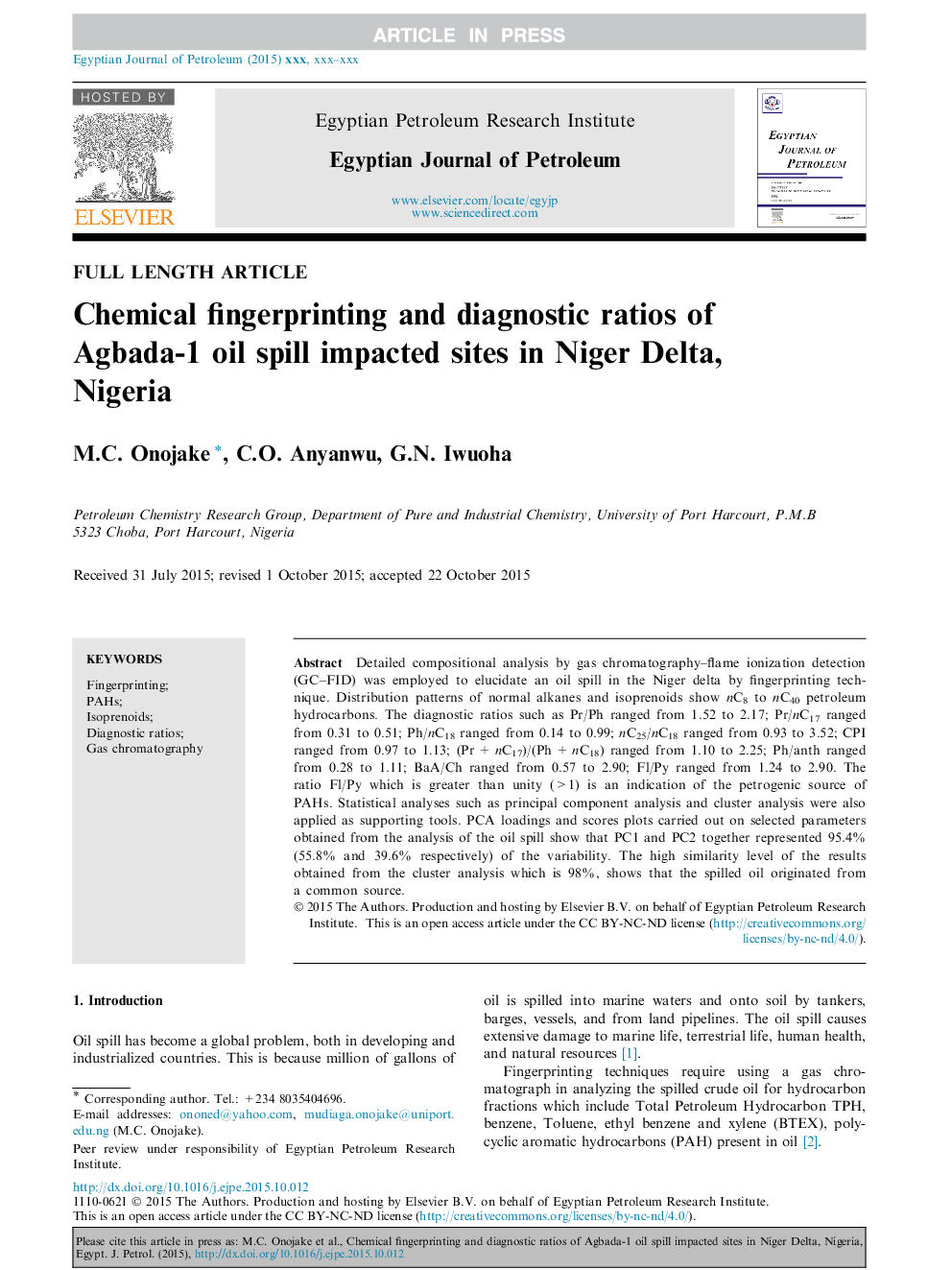| Article ID | Journal | Published Year | Pages | File Type |
|---|---|---|---|---|
| 5484672 | Egyptian Journal of Petroleum | 2016 | 7 Pages |
Abstract
Detailed compositional analysis by gas chromatography-flame ionization detection (GC-FID) was employed to elucidate an oil spill in the Niger delta by fingerprinting technique. Distribution patterns of normal alkanes and isoprenoids show nC8 to nC40 petroleum hydrocarbons. The diagnostic ratios such as Pr/Ph ranged from 1.52 to 2.17; Pr/nC17 ranged from 0.31 to 0.51; Ph/nC18 ranged from 0.14 to 0.99; nC25/nC18 ranged from 0.93 to 3.52; CPI ranged from 0.97 to 1.13; (Pr + nC17)/(Ph + nC18) ranged from 1.10 to 2.25; Ph/anth ranged from 0.28 to 1.11; BaA/Ch ranged from 0.57 to 2.90; Fl/Py ranged from 1.24 to 2.90. The ratio Fl/Py which is greater than unity (>1) is an indication of the petrogenic source of PAHs. Statistical analyses such as principal component analysis and cluster analysis were also applied as supporting tools. PCA loadings and scores plots carried out on selected parameters obtained from the analysis of the oil spill show that PC1 and PC2 together represented 95.4% (55.8% and 39.6% respectively) of the variability. The high similarity level of the results obtained from the cluster analysis which is 98%, shows that the spilled oil originated from a common source.
Related Topics
Physical Sciences and Engineering
Energy
Energy (General)
Authors
M.C. Onojake, C.O. Anyanwu, G.N. Iwuoha,
